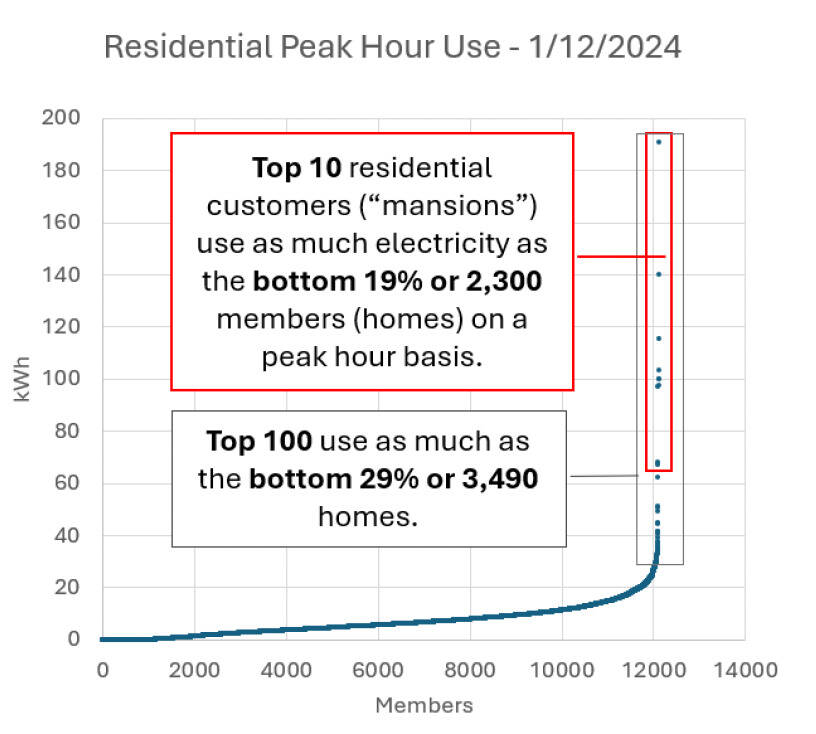By Chom and Chris Greacen
Lopez Island
Our customer-owned electric utility, OPALCO, has voiced with increasing alarm: “Blackouts are coming”(https://www.opalco.com/wp-content/uploads/2024/02/Anatomy-of-a-Close-Call-PNGC-R4.pdf). Why? Coal and natural gas-fired power plants are being retired faster than we can add new wind and solar energy, and electric load is growing with the addition of new electric vehicles and power-hungry data centers. We are entering a new reality where electricity will be in short supply and the consequences for our electric bills may be painful.
For OPALCO, the biggest crunch time is when the mercury dips well below freezing and our heaters work extra hard to keep us warm and pipes from bursting. A cold snap in December 2021 led to a spike in power consumption that resulted in a $300,000 penalty imposed (https://www.opalco.com/why-is-my-opalco-bill-so-high-this-month-cold-temps-bpa-demand-charges-and-4-rate-increase/2022/01/) by OPALCO’s wholesale power supplier, the Bonneville Power Administration, for peak consumption exceeding the normal range. This past January cold weather triggered a similar penalty.
To make matters worse, when demand spikes, BPA has to scramble to find extra supply in the spot market, where prices can be very volatile and can surge to 25 times the normal wholesale price.
A problem is that there is a gaping mismatch between who causes the demand spikes and how much they pay to cover the system costs associated with peak demand. On Jan. 12, 2024, when OPALCO’s system demand peaked, top-10 residential customers (“mansions”) were consuming as much as the bottom 19% or 2,308 customers! Similarly, the top 100 contributed as much as the bottom 29% or 3,489 homes (see graph).
Despite the deeply unequal contribution to the system peaks, OPALCO imposes the same fixed charge of $56 per month that every other residential customer pays.
A fairer way to allocate costs associated with peak consumption would be to use a metered demand charge: the more one contributes to the system peak, the more one pays. If allocated based on peak usage, the top 10 customers should have been charged fixed costs of $167,000 per year, instead of the $6,720 OPALCO collected from the flat $56-per-month access charge – an underpayment of $160,000 (https://www.opalco.com/wp-content/uploads/2018/09/2018-Cost-of-Service-Study-Presentation.pdf). Similarly, the top 100 customers collectively underpaid by $547,000. OPALCO recovers this shortfall by padding everyone’s energy charge. We, the 99%, have been unwittingly subsidizing the uber-rich.
Mansion owners need to pay their fair share and be given a disincentive to not squander our limited collective energy resource, driving up the price for everyone.




